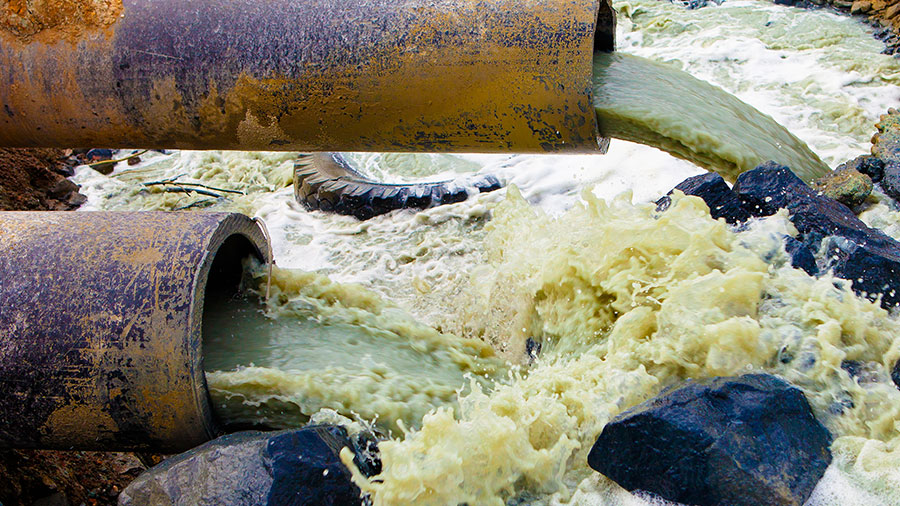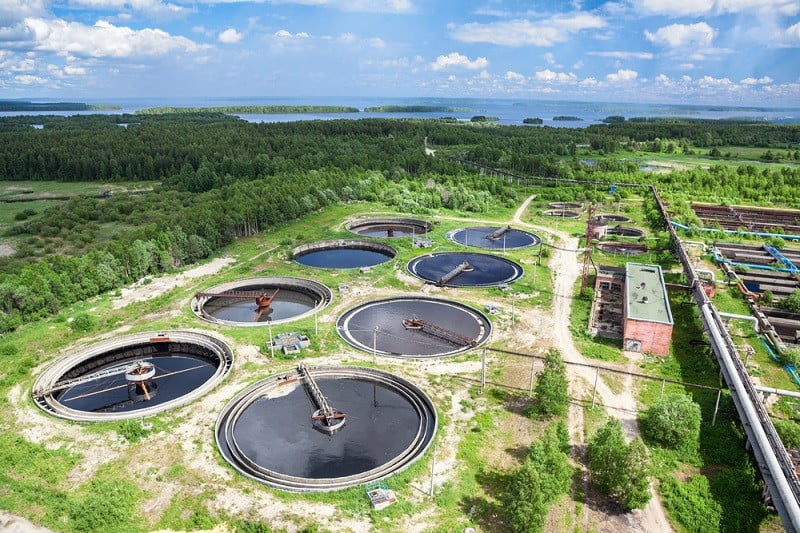Cutting-edge Industrial Wastewater Treatment Solutions: Protecting the Environment
Cutting-edge Industrial Wastewater Treatment Solutions: Protecting the Environment
Blog Article
Understanding the Comprehensive Refine of Liquid Waste Disposal: Best Practices and Environmental Impact Factors To Consider
The management of liquid waste disposal is a diverse concern that needs a complete understanding of numerous finest methods and their associated environmental influences. From the types of fluid waste generated to the methods utilized for collection, treatment, and final disposal, each step plays an essential role in protecting ecological communities and public health and wellness. As governing standards develop and innovation developments, the conversation around these procedures becomes increasingly important. What implications do these adjustments hold for future sustainability initiatives, and exactly how can stakeholders guarantee that they are properly resolved?
Types of Liquid Waste
Recognizing the various sorts of liquid waste is vital for effective administration and disposal methods. Liquid waste can be extensively categorized right into several kinds, each calling for unique handling and treatment techniques.
Industrial fluid waste typically has hazardous materials, consisting of heavy metals, solvents, and chemicals, produced during producing procedures. These wastes demand stringent governing compliance to secure human health and the environment. Domestic liquid waste primarily describes wastewater produced from houses, consisting of sewer and greywater, which, although less harmful, can still present substantial threats if poorly managed.
Agricultural liquid waste, including runoff from farms, commonly has plant foods and pesticides that can result in ecological deterioration otherwise dealt with appropriately. Medical liquid waste, created from healthcare facilities, includes contaminated fluids such as bodily liquids and chemicals, calling for specialized disposal approaches to stop infection and ecological contamination.
Finally, oil and oil waste, normally created by dining establishments and vehicle markets, can trigger severe blockages in sewage system systems otherwise taken care of effectively. Understanding these classifications promotes targeted techniques for treatment, conformity with guidelines, and efficient disposal methods, ultimately advertising ecological sustainability and public health and wellness safety.

Collection Techniques
Effective collection approaches are important for the proper monitoring of fluid waste, guaranteeing that it is gathered securely and efficiently prior to treatment or disposal. Various techniques are used depending on the kind of liquid waste created, the volume, and the details attributes of the waste.
One common technique is making use of committed collection storage tanks or sumps, which are designed to catch fluid waste at the source. These systems often integrate pumps that facilitate the transfer of waste to larger storage space containers or treatment facilities. Additionally, mobile collection systems equipped with vacuum cleaner technology are utilized in circumstances where waste is generated periodically or in hard-to-reach places.
For industrial setups, closed-loop systems can efficiently reduce leakages and spills, allowing for the healing and reuse of fluid waste. It is likewise important to train workers on correct collection protocols to reduce threats linked with hazardous compounds.
In addition, implementing regular maintenance routines for collection devices makes certain optimum performance and safety. The combination of sophisticated tracking systems can improve collection performance by giving real-time data on waste levels and potential dangers. On the whole, reliable collection approaches are foundational to sustainable liquid waste monitoring practices.
Therapy Procedures
Therapy processes play a crucial function in the monitoring of fluid waste, changing potentially dangerous materials into multiple-use sources or risk-free effluents - liquid waste disposal. These processes can be extensively categorized right into physical, chemical, and organic techniques, each tailored to deal with particular contaminants existing in the waste stream
Physical therapy techniques, such as sedimentation and filtering, work by removing put on hold solids and particle matter. These techniques are typically the initial step in the therapy chain, successfully minimizing the tons on subsequent processes. Chemical therapies include making use of reagents to neutralize damaging substances, precipitate heavy steels, or oxidize organic toxins, consequently improving the safety and security of the effluent.
Biological therapy processes, consisting of activated sludge systems and anaerobic digestion, capitalize on the all-natural capabilities of bacteria to degrade raw material. These methods are specifically effective for wastewater having naturally degradable contaminants. Advanced treatment technologies, such as membrane filtering and advanced oxidation processes, are increasingly used to accomplish greater degrees of purification.
Including a combination of these treatment approaches not only makes sure conformity with regulatory requirements but likewise advertises ecological sustainability by recovering beneficial sources from liquid waste.
Disposal Options
Exactly how can organizations make certain the liable and secure disposal of fluid waste? Effective disposal recommended you read alternatives are important for guarding public health and the environment. The main approaches consist of land disposal, therapy, and incineration adhered to by discharge into municipal wastewater systems.
Land disposal involves the careful control of fluid waste in designated garbage dumps, making certain that it does not seep right into bordering dirt or water. Incineration, on the various other hand, topics fluid waste to high temperature levels, transforming it into ash and gases, which call for correct purification to lessen exhausts. This method appropriates for contaminateds materials that can not be dealt with via typical means.
In instances click here for more where fluid waste can be treated, organizations might go with biological or chemical therapy procedures to counteract harmful parts prior to discharging the treated effluent into local systems. This route usually aligns with regulatory requirements, ensuring that the effluent fulfills security requirements.
Eventually, companies need to carry out detailed analyses of each disposal choice to determine its feasibility, thinking about elements such as waste make-up, regulative compliance, and potential dangers to health and the setting. By selecting proper disposal approaches, services can contribute to a liable waste management technique.
Environmental Impact
The ecological influence of fluid waste disposal is a vital factor to consider for organizations looking for to lessen their ecological footprint. Inappropriate disposal methods can cause significant contamination of water sources, dirt degradation, and negative results on local ecological communities. As an example, harmful liquids can leach right into groundwater, posturing dangers to alcohol consumption water materials and marine life. Additionally, the discharge of without treatment or inadequately dealt with waste into surface area waters can result in eutrophication, causing oxygen depletion and the succeeding death of fish and various other organisms.

To alleviate these impacts, companies need to liquid waste disposal melbourne take on finest practices such as executing rigorous waste therapy procedures, promoting recycling and reuse, and adhering to regulatory criteria. By taking a positive method to liquid waste management, entities can significantly reduce their ecological footprint while supporting lasting advancement goals. Inevitably, a thorough understanding of the ecological effects associated with fluid waste disposal is important for informed decision-making and liable stewardship of natural sources.
Final Thought
Reliable management of liquid waste is vital for protecting environmental integrity and public health and wellness. Eventually, a thorough understanding of liquid waste disposal not only alleviates ecological influences but likewise promotes a dedication to responsible resource administration and environmental stewardship.
The monitoring of liquid waste disposal is a multifaceted concern that requires a complete understanding of numerous best practices and their connected ecological impacts. From the types of fluid waste generated to the techniques used for collection, therapy, and last disposal, each step plays an important role in securing ecological communities and public health.The ecological effect of fluid waste disposal is a critical consideration for companies looking for to reduce their eco-friendly footprint. Eventually, a detailed understanding of the environmental effects connected with liquid waste disposal is vital for notified decision-making and accountable stewardship of natural resources.
Ultimately, a comprehensive understanding of liquid waste disposal not only mitigates ecological influences however likewise fosters a dedication to liable source administration and environmental stewardship.
Report this page